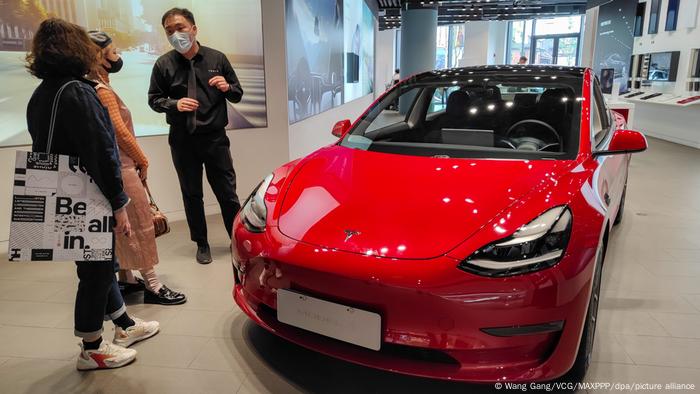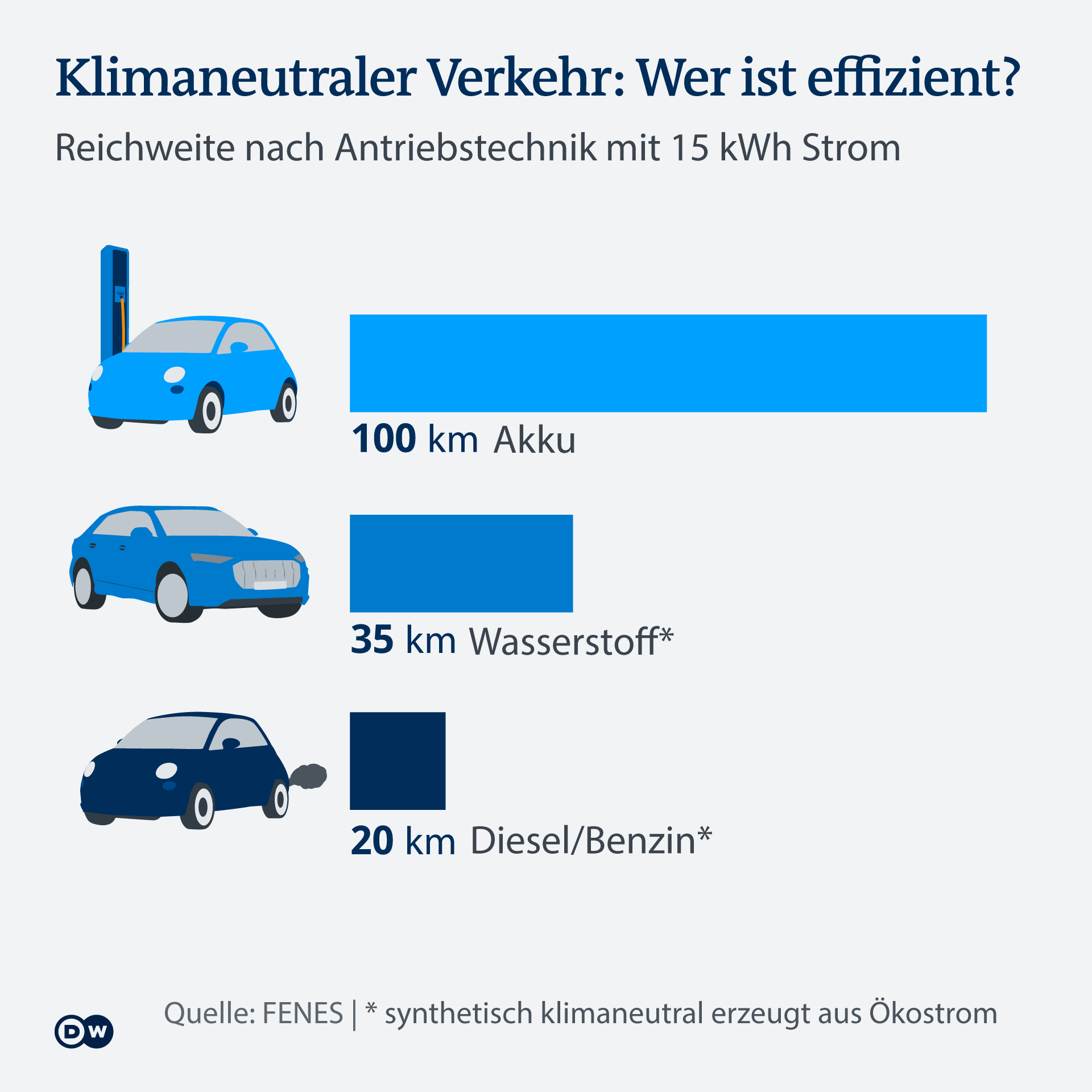Batteries and e-vehicles are getting cheaper and cheaper and climate-friendly fuels from green electricity will be available in a few years. Which technology is best for cars, ships and planes?

< p>In principle, e-cars drive in a similar way to cars with combustion engines. But they are much quieter, accelerate much faster and do not require a manual transmission. The biggest difference is charging: Plug in the power plug in the parking lot instead of driving to the next gas station.
Decreasing costs for e-cars
So far, anyone who buys an electric car has had to pay significantly more than for a car with a combustion engine: in comparison, new e-cars without subsidies cost almost twice as much as combustion engines in 2020, according to a study by Bloomberg New Energy Finance (BNEF) on behalf of Transport and Environment, the European umbrella organization for sustainable transport.
But the prices for electric vehicles are expected to drop significantly in the next few years. According to the BNEF study, in 2026 the production costs of an e-car will correspond to those of a combustion engine, and by 2030 they should be 10-30 percent cheaper.
By then at the latest, driving with a battery will also be significantly cheaper than with a combustion engine. This is mainly due to the high conversion losses of fuels in combustion engines: Around two thirds of the energy is lost as waste heat. Electric motors, on the other hand, can actually convert around 95 percent of the energy used into locomotion. In comparison, they only need a third of the energy.

And electric vehicles are cheaper to run: a diesel car consumes around seven liters of fuel per 100 kilometers. At a fuel price of one euro (excluding taxes), the route costs around seven euros. E-cars consume around 15 (kWh) of electricity for 100 kilometers. With an electricity price of 20 euro cents per kWh (without taxes), that works out to only three euros, and with your own solar power from the roof for eight cents per kWh only 1.20 euros for 100 kilometers.
Due to the great cost advantage, experts expect a breakthrough for e-cars and e-trucks with batteries. The BNEF study assumes that 70 percent of all new cars sold in the EU could be battery-powered as early as 2030 under optimal conditions, and under normal circumstances from 2032.

Battery instead of hydrogen for trucks
Researchers and vehicle manufacturers also rely primarily on battery technology for heavy-duty traffic, which travels hundreds of kilometers per day. Due to technical advances and mass production, it is becoming cheaper and cheaper. But for this, sufficient fast charging stations are important.
Trucks with electric motors, for which electricity is generated with hydrogen in the fuel cell, are becoming significantly more expensive and are usually no longer an option, according to a current study by Fraunhofer ISE.
The study was commissioned by the Traton Group, the world's leading commercial vehicle manufacturers with the brands MAN, Scania, Volkswagen, Caminhões and Navistar. They see their strategy of focusing on the development of electric trucks with batteries as confirmed.
“In truck traffic, especially on long distances, pure electric trucks are used in most cases be the cheaper and more environmentally friendly solution,” says Catharina Modahl-Nilsson, Chief Engineer at the Traton Group. “Because the hydrogen truck has a decisive disadvantage. Only about a quarter of the output energy flows into the drive, three quarters are lost through conversion losses. With the electric truck, the relationship is reversed.”
Even more inefficient than hydrogen is the operation of cars and trucks with synthetically produced fuels, so-called e-fuels. For this purpose, hydrogen is first produced from water and green electricity and then synthetic fuels such as diesel, petrol or kerosene are added with the addition of CO2. The synthetic fuel is climate-neutral and combustion engines can use it without any problems.

However, due to the many conversion losses, e-fuels are very inefficient compared to battery technology and therefore also significantly more expensive: vehicles with e-fuels consume five times more energy overall than with batteries and electric motors. According to a study commissioned by the German Energy Agency (Dena), they will be around eight times more expensive per kilometer in future.
E-fuels for ships and aircraft
Increasingly, small propeller planes, excursion boats and ferries are also being battery-powered. Battery technology is not suitable for trains on the other hand. Trains consume a lot of energy and are better supplied by overhead lines. Trolley routes can also be set up for e-buses and e-trucks and are a cheap option.
Current battery technology is also not sufficient for commercial aircraft and ocean-going ships. The energy requirement is too high for long distances at sea and in the air. And for large aircraft, the batteries are too heavy. The climate-friendly alternative for container ships and commercial aircraft are e-fuels.

Container ships need a lot of energy. Climate-neutral transport is only possible with synthetic fuel from green electricity.
The first commercial production plant is currently being built in southern Chile. There, companies like Porsche and Siemens Energy want to produce e-fuels with cheap wind power. “In ten years we will see dozens of such projects per year springing up like mushrooms, climate-neutral fuel from electricity, water and air,” predicts the expert for global energy scenarios Prof. Christian Breyer from the LUT.
Earn money with the battery in an e-car?
Small e-cars have battery storage with an output of around 50 kilowatt hours. With a full battery, the electricity requirements of a two-person household in Germany can be completely covered for a week.
The intelligent connection will be worthwhile for homeowners in the future: Cheap solar power from the house roof charges the during the day Car battery, in the evening it supplies the house with electricity. This so-called bidirectional charging is increasingly coming into focus. Vehicle manufacturers such as VW are preparing their models for this use, the technology is being tried out in pilot projects and energy suppliers are showing interest in using vehicle batteries in the future when the electricity demand in the grid is particularly high.
Currently, however, the technology is still in its infancy. So far, there are only a few wall boxes that can feed the electricity back from the car. And there are still no payments from energy suppliers to car owners for electricity deliveries. However, experts expect that this will change in the next few years. If you then combine an e-car with the grid feed-in, you could earn around 800 euros per year with the grid feed-in.

